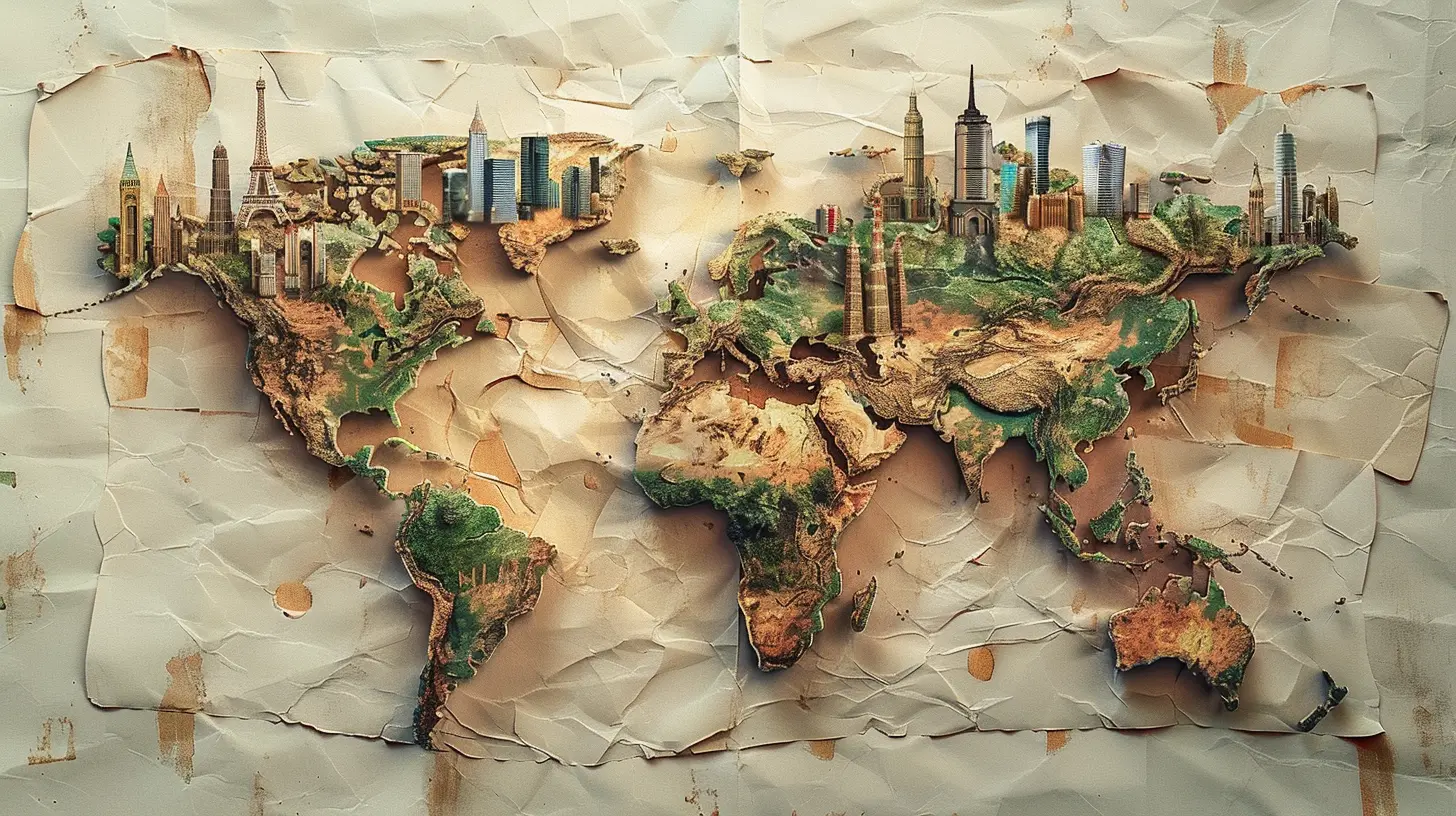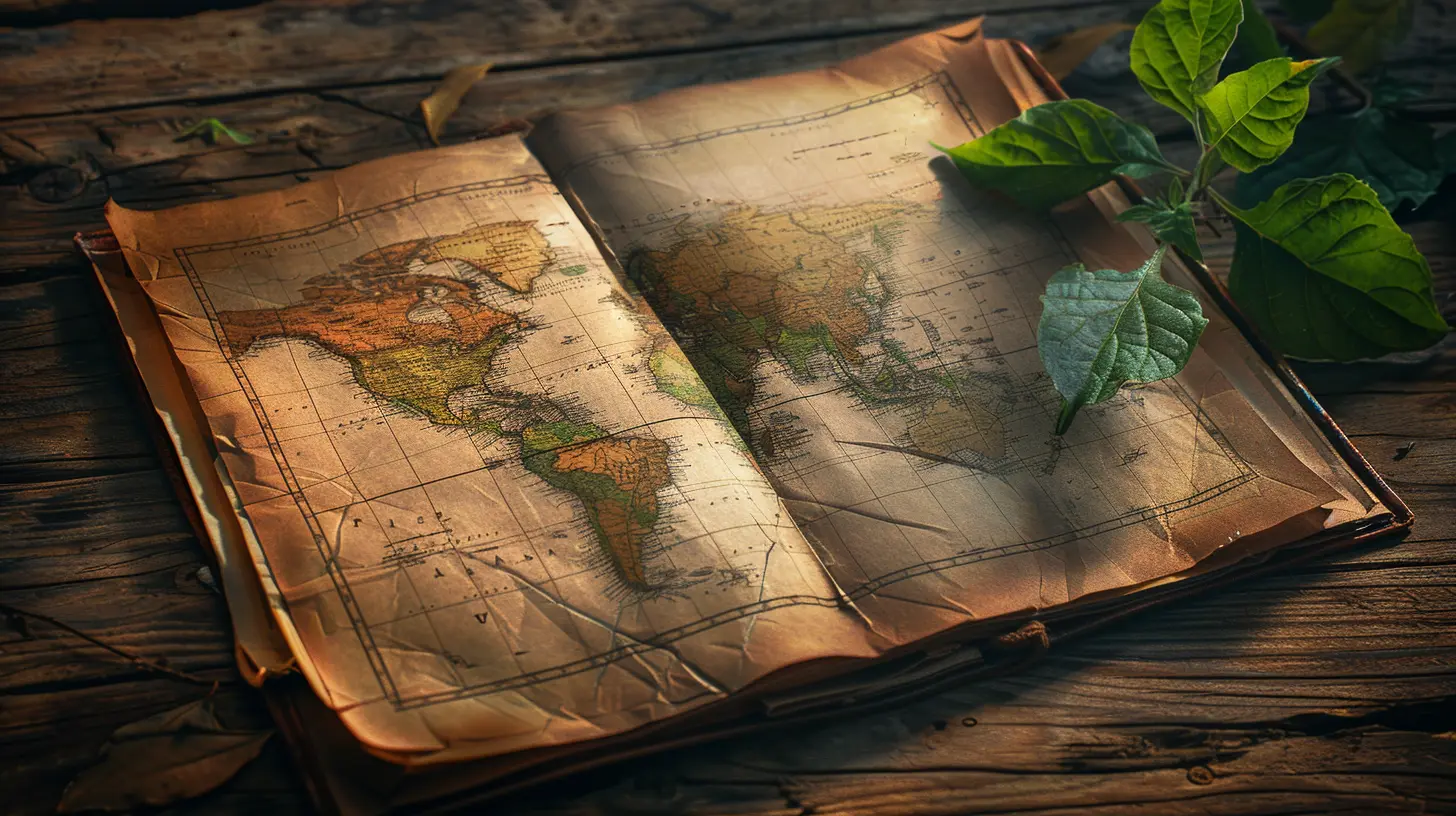Exploring the Intersection of Geography and Culture
13 September 2025
Have you ever wondered why people from different parts of the world live so differently? Why do some cultures thrive in bustling cities while others deeply connect with mountains, deserts, or oceans? Well, the answer lies in the beautiful dance between geography and culture. These two are not just distant cousins—they're more like best friends constantly shaping and influencing one another.
In this article, we’re diving deep into the fascinating world where geography meets culture. It’s a journey that will take us from high mountaintops to dense rainforests, from the Arctic's icy barrenness to the heart of crowded urban centers. Let's unpack how our world’s physical features shape human lives, behaviors, customs, and even the way we think.
What Exactly Is Geography and Culture?
Before we connect the dots, let's break these terms down.Geography: More Than Just Maps
When most people hear geography, they picture maps or maybe reciting capital cities back in school. But geography is way more than that. It’s the study of Earth’s landscapes, environments, and the relationships between people and their surroundings.It includes:
- Physical features like mountains, rivers, climate, and natural resources.
- Human geography, which focuses on how people interact with these spaces.
Culture: The Heartbeat of Society
Culture is everything that defines a group of people—it’s their language, traditions, food, fashion, music, religion, and social behavior. It’s the lens through which we see the world. Culture isn’t static; it evolves, and guess what helps shape it? Yup—you guessed it—geography!
The Powerful Influence of Geography on Culture
Let’s get into the juicy bits: how geography molds culture like a potter shapes clay.Climate and Lifestyle
One of the most obvious ways geography impacts culture is through climate. How people dress, what they eat, and even how they build their homes can be traced back to weather patterns.- Cold Climates: In chilly regions like Siberia or Canada, people wear thick clothing, build insulated homes, and focus on calorie-rich diets. Heating systems, fur-lined coats, and hot beverages are staples.
- Hot Climates: In places like the Middle East or parts of Africa, light fabrics, loose-fitting clothes, and diets rich in grains and vegetables are more common. Homes have thick walls and small windows to keep heat out.
Isn’t it incredible how nature gently nudges us toward unique ways of living?
Terrain and Isolation
Mountains, deserts, rivers, and oceans can act like natural fences. They keep people isolated, and guess what? That isolation leads to distinct languages, traditions, and lifestyles.Take the Himalayas. This mighty mountain range has kept many communities separated for centuries, each developing its own dialects, beliefs, and practices.
On the flip side, river valleys like the Nile or the Indus became cradles of ancient civilizations. The fertile land provided resources, attracting people and enabling rich cultures to flourish.
Natural Resources and Economic Activities
You are what you do—and much of what people do depends on what's around them.- Coastal Regions tend to have cultures centered around fishing, trade, and navigation. Think of Japan or Norway.
- Forest Areas cultivate woodworking, herbal medicine, and spiritual traditions tied to nature.
- Deserts inspire nomadic lifestyles, camel herding, and unique architecture to handle extreme heat.
Economic activities born from natural surroundings shape traditions, family structures, and even belief systems.
How Culture, In Turn, Shapes Geography
It’s not a one-way street. Culture also leaves its mark on geography.Architecture and City Planning
Ever noticed how mosques, temples, churches, or shrines often occupy central spots in cities? Culture dictates what gets built where. In Europe, narrow winding streets show medieval influence. Meanwhile, American cities are often grid-based—a nod to modern planning ideals.In tropical areas, buildings have high ceilings and open windows. In colder zones, compact homes with tighter insulation dominate. All this shows how cultural needs adapt to geography and then reshape it.
Agricultural Practices
Cultural preferences lead to specific farming methods. Think of the terraced rice fields in Southeast Asia. They weren’t just invented randomly—they reflect both the geography (hilly terrain) and cultural traditions passed down for generations.In India, the type of crops grown during monsoon season isn’t just about feasibility—it’s tradition, economy, and religion all rolled into one.
Case Studies: Geography Meets Culture
Let’s bring theory to life with some examples that scream: geography and culture are inseparable.1. The Maasai of East Africa
The Maasai people live in Kenya and Tanzania, largely in semi-arid lands. Their lives revolve around cattle—because in a place with limited resources, cows are both wealth and survival. Their diet, customs, rituals, and songs all honor this sacred bond with livestock.Now imagine them living in a rainforest. Their way of life would be entirely different.
2. Arctic Indigenous Tribes
Inuit communities survive in some of the harshest climates on Earth. Their clothing, made from animal skins, is designed for maximum warmth. Their diets are heavy on meat and fat because that’s what’s available. Snow homes (igloos), sleds, and hunting techniques are textbook examples of geography-driven adaptation.3. The Ganges in India
The Ganges isn't just a river—it’s a holy symbol, a lifeline, and a part of India’s cultural DNA. Geography provided the water; culture turned it into a sacred landmark. Festivals like Kumbh Mela bring millions to its banks, blending spirituality with geography.Globalization: Blurring the Lines?
Ah, the internet. Airplanes. Zoom calls. Everywhere we turn, cultures are brushing up against each other thanks to globalization. So, is geography becoming less important?Not really. While globalization introduces variety and blends cultures, the core remains rooted in geography.
Sure, you can eat sushi in New York or enjoy Bollywood in London. But the deeper cultural understanding—how sushi reflects Japanese minimalism or how Bollywood stems from traditional Indian storytelling—still ties back to geography.
Think of it like this: You can take a tree out of the forest, but its rings will always tell where it grew.
Why Understanding the Intersection Matters
So, why should you care about how geography and culture connect?- For Students: It helps in understanding history, economics, politics, and even literature through a more integrated lens.
- For Travelers: It makes your trips richer. You see landscapes not just as scenery but as the mother of culture.
- For Everyone: It breeds empathy. Realizing how environments shape cultures can break stereotypes and foster deeper respect.
Plus, in a world dealing with climate change, migration, and globalization, knowing how geography shapes culture can help us make smarter decisions as global citizens.
The Takeaway
Geography and culture are like two halves of the same story. One gives the stage; the other directs the play. Whether it’s the foods we eat, the clothes we wear, or the festivals we celebrate—they’re all rooted in the lands we live on.So next time you’re gazing at a mountain range or walking by a river, pause and think: who lives here, and how has this place shaped their lives?
That’s the magic of exploring the intersection of geography and culture.
all images in this post were generated using AI tools
Category:
Social StudiesAuthor:

Eva Barker
Discussion
rate this article
1 comments
Zacharias McClendon
This article beautifully captures how geography shapes cultural identities. It’s fascinating to see how landscapes, climates, and locations influence traditions and lifestyles. Understanding this connection enriches our appreciation for diversity and reminds us how interconnected we all truly are!
September 23, 2025 at 4:50 AM

Eva Barker
Thank you! I’m glad you found the connection between geography and culture fascinating. It truly highlights our shared human experience.


